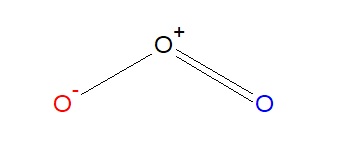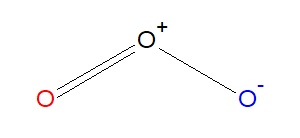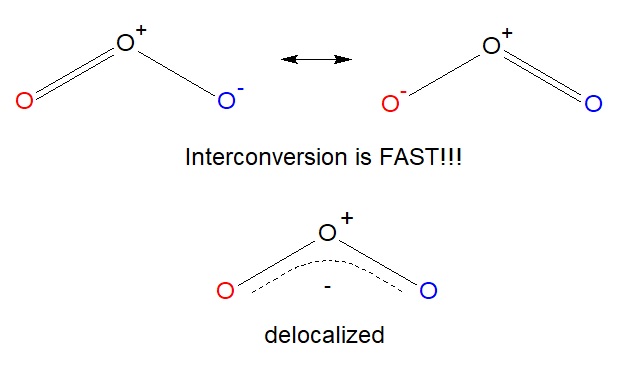How many O3 resonance structures can be drawn?
How many O3 resonance structures can be drawn? The answer is simple: two. Briefly, if you follow the octet rule, you will see the oxygen atoms are connected linearly, where the central oxygen atom is always positively charged, and the terminal oxygen atoms are either negatively charged with a single bond or neutral with a double bond. We will go more in-depth into this explanation below.
If you would like a brief refresher, please see this post on the what is resonance.
The “normal” or neutral state of an oxygen atom is one in which it has two bonds and two lone pairs, which complete an octet. However, with ozone you’ll see that all three oxygen atoms cannot have this configuration. To stay consistent with the octet rule, we need to have at least one charged oxygen atom in the structure.
The first resonance structure shown below has one positively charged oxygen, one negatively charged oxygen and one neutral oxygen with two bonds. The overall charge of the molecule is zero, and the octet rule is obeyed for all three atoms. Randomly, we’ve chosen the blue oxygen atom to take the negative charge in the first resonance structure.
The second resonance structure of ozone is very similar, as it has one positively charged oxygen, one negatively charged oxygen, and one neutral oxygen with two bonds again. However, in this structure, the right oxygen atom has the negative charge and the left oxygen atom is neutral. Of course, in reality we can’t tell the difference between these two atoms, but for simplicity’s sake we will show them as blue and red oxygen atoms. As with the below resonance structure, the octet rule is obeyed.
However, we know that electrons are never localized like we show here, and these two structures are constantly going back and forth between each other. This means we can draw a third structure, where both the red and the blue oxygen atom have a partial, or dashed, second bond. While this isn’t a true resonance structure, it is a good representation to show how electrons are constantly moving between atoms, a term called delocalization.
Ozone is a good demonstration of several rules of resonance you should know:
- Overall charge does not change between resonance structures. It can change on individual atoms, but not for the overall molecule.
- Check yourself and be sure that you are sticking with the octet rule for MOST atoms. (Not all follow it all of the time, but most will)
- Oxygen has different charge depending on its electrons and bonds:
- 2 bonds + 2 lone pairs = neutral oxygen atom
- 1 bond + 3 lone pairs = negatively charged oxygen atom
- 3 bonds and 1 lone pair = positively charged oxygen
So, in summary, if a professors asks you how many resonance structures can be drawn for ozone O3, your answer should be a (confident) two.
Reference: Ozone and the ozonolysis of alkenes





